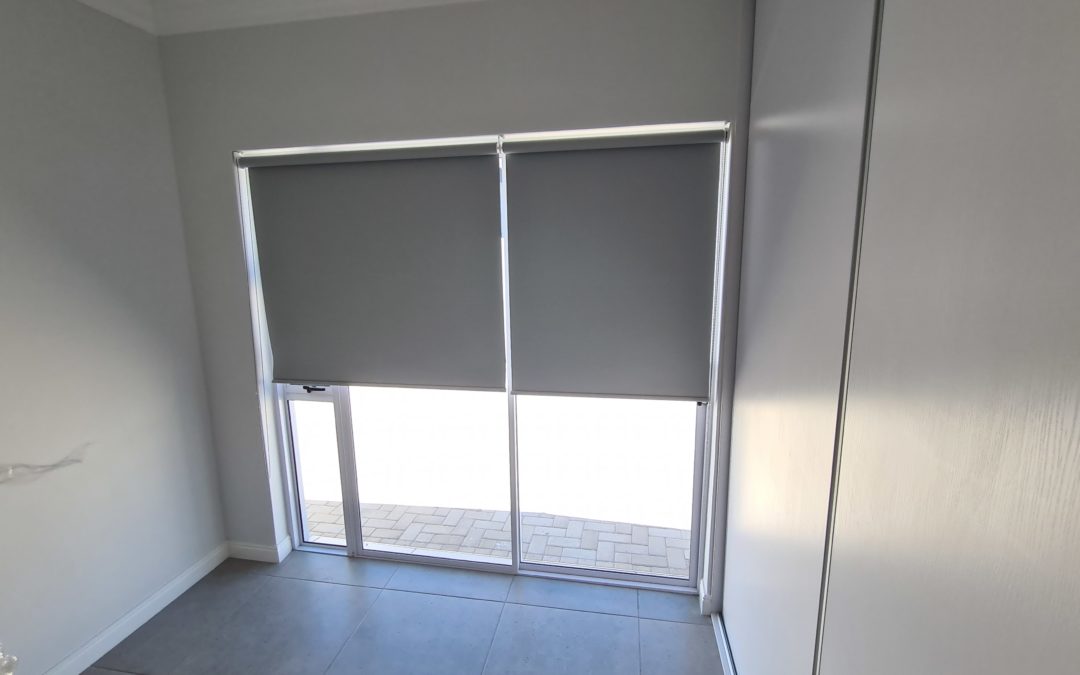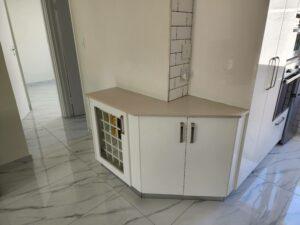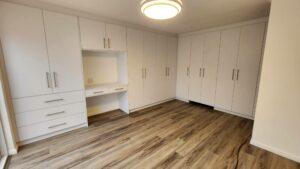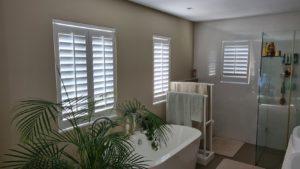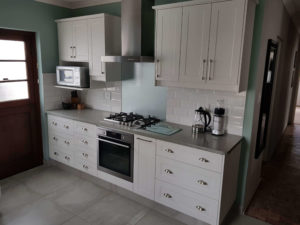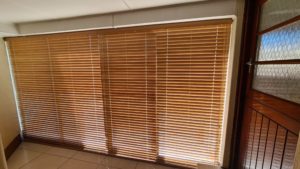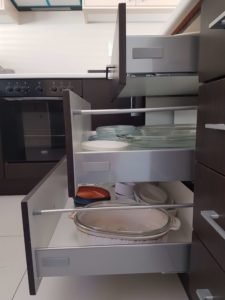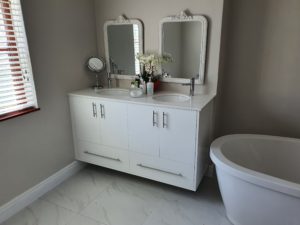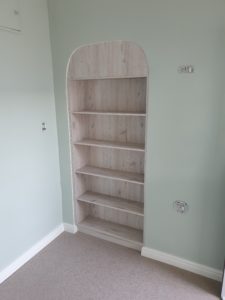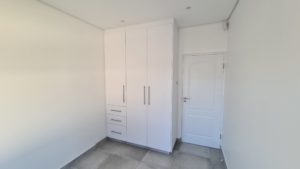As a homeowner, I am always looking for ways to improve the look and functionality of my living space. One area that often gets overlooked is window treatments. Not only do they add style to a room, but they also serve practical purposes such as privacy and light control.
When it comes to window blinds, there are many different types to choose from. Each type has its own set of pros and cons, so it’s important to do your research before making a decision. In this article, I will explore the various types of window blinds and provide insights into the advantages and disadvantages of each. By the end, you will have a better understanding of which type of window blind is best suited for your needs.
Types of Window Blinds
When it comes to window treatments, there are a variety of options to choose from. Window blinds are a popular choice for their versatility, style, and functionality. Curtains on the other hand are old-fashioned and a pain to keep clean and dust free. In this section, I will discuss the different types of window blinds, including vertical blinds, horizontal blinds, roller blinds, and Roman blinds.
Vertical Blinds
Vertical blinds are a popular choice for large windows and sliding glass doors. They consist of long, vertical slats that can be tilted to adjust the amount of light that enters the room. Vertical blinds come in a variety of materials, however, you will find the South African market seems to only cater to. They are easy to be relatively easy to clean and maintain but can be noisy when opening and closing.
Horizontal or Venetian Blinds
Horizontal blinds, also known as Venetian blinds, are a classic choice for any room. They consist of horizontal slats that can be tilted to adjust the amount of light that enters the room. Horizontal blinds come in a variety of materials, including aluminium, wood, and Plaswood. They are easy to clean and maintain but can be difficult to operate for those with mobility issues.
Roller Blinds
Roller blinds are a popular choice for their simplicity and affordability. They consist of a single piece of fabric that rolls up and down to adjust the amount of light that enters the room. Roller blinds come in a variety of materials, including vinyl, fabric, and solar shades. They are easy to install and operate but can be difficult to clean if they become stained.
Roman Blinds
Roman blinds are a stylish choice for any room. They consist of a single piece of fabric that folds up in pleats when opened. Roman blinds come in a variety of materials, including cotton, linen, and silk. These blinds aren’t popular in the South African market anymore and see hardly any sales across the industry.
Overall, each type of window blind has its own unique set of pros and cons. When choosing the right window treatment for your home, it’s important to consider your personal style, budget, and functionality needs. Here are some pros and cons of the different blinds.
Pros and Cons of Vertical Blinds
Pros
Vertical blinds have several advantages over other types of window treatments. One of the biggest advantages is their ability to control light and privacy. The vertical slats are thicker than horizontal blinds, which blocks sunlight more effectively providing UV protection and can also keep heat from escaping during the cold seasons. Not only do vertical blind slats help with sunlight, but they also give you the ultimate privacy when completely closed.
Another advantage of vertical blinds is their versatility. They are available in a wide array of colour and material options. The vanes, the long, narrow strips that hang from the headrail, can be either fabric, wood or hard vinyl, offering options for any decor and lifestyle need. They are also an excellent choice for full-size windows and doors, including sliding doors or French doors.
Vertical blinds are also simple to clean. Unlike drapes, blinds can be easily wiped down and cleaned without taking them down. They are also easy to replace. If vertical blinds are damaged for any reason, single-blind panels can be easily replaced inexpensively.
Cons
One of the biggest disadvantages of vertical blinds is their noise level. When they move or sway, they make a lot of noise, which can be distracting and annoying. This can be a significant problem if you have children or pets that might accidentally bump into them.
Another disadvantage of vertical blinds is their tendency to collect dust and dirt. The vertical slats can be difficult to clean, and they can quickly become dirty and unsightly. This can be a problem for people with allergies or other respiratory issues.
Finally, vertical blinds can be challenging to install. They require precise measurements and careful installation to ensure that they operate correctly. If you are not handy with tools or do not have experience installing window treatments, you may need to hire a professional to install them for you.
Pros and Cons of Horizontal Blinds
Pros
I personally think that horizontal blinds are a great choice for window treatments. One of the biggest advantages of horizontal blinds is their versatility. They can be custom-made to fit into different sizes and shapes, making them a great choice for any window. Additionally, horizontal blinds provide excellent light control. They allow you to adjust the angle of the slats to let in just the right amount of light, which can be great for creating a cosy ambience.
Another advantage of horizontal blinds is that they are easy to clean. Unlike other types of window treatments, such as curtains, horizontal blinds can be easily wiped down with a damp cloth. This makes them a great choice for people who suffer from allergies or who want a low-maintenance option for their windows.
Cons
While horizontal blinds have many advantages, there are also some downsides to consider. One of the biggest disadvantages of horizontal blinds is that they can be heavy and difficult to operate. This can be especially true for larger blinds or blinds made from heavier materials, such as wood or metal. Additionally, horizontal blinds can be noisy when they are opened or closed, which can be a nuisance for some people.
Another disadvantage of horizontal blinds is that they can be difficult to install. Unlike other types of window treatments, such as curtains or roller shades, horizontal blinds require precise measurements and careful installation to ensure that they fit properly and operate smoothly. This can be a challenge for people who are not handy or who do not have experience with home improvement projects.
Pros and Cons of Roller Blinds
Pros
I personally love roller blinds because they are easy to install and provide a sleek and modern look to any room. Here are some of the benefits of roller blinds:
- Easy to clean: Roller blinds are typically made of fabric, which can be easily cleaned with a damp cloth or vacuumed with a soft brush attachment.
- Customizable: Roller blinds can be made to fit any size window and can be customized with a variety of fabrics and patterns to match your decor.
- Affordable: Compared to other types of blinds, roller blinds are often more affordable.
- Easy to use: Roller blinds are operated with a simple chain or cord, making them easy to use for anyone.
Cons
While there are many benefits to roller blinds, there are also some drawbacks to consider:
- Light control: Roller blinds are not as effective at blocking out light as other types of blinds, such as blackout shades.
- Less privacy: Because roller blinds are made of fabric, they do not provide as much privacy as blinds made of other materials, such as wood or aluminium.
- Less durable: Roller blinds can be less durable than other types of blinds, especially if they are made of lower-quality materials.
Pros and Cons of Roman Blinds
Pros
I absolutely love the look of Roman Blinds. They are stylish and elegant window treatments that can add a touch of luxury to any room. Roman Blinds are made from a wide variety of fabrics, so you can choose the perfect one to match your decor. They can be made from thick, blackout fabrics for bedrooms, or lighter fabrics for living areas that let in more light.
One of the best things about Roman Blinds is that they can be custom-made to fit any window size or shape. This means that you can get a perfect fit every time, which is important for both aesthetics and functionality. Roman Blinds are also incredibly easy to use. They can be opened and closed with a simple cord, making them a great choice for anyone who wants a fuss-free window treatment.
Another advantage of Roman Blinds is that they are a timeless style that will never go out of fashion. They have been around for decades and are a popular choice for many homeowners. A wise fabric selection will extend the life of your Roman Blinds by keeping them from becoming too trendy.
Cons
One of the biggest disadvantages of Roman Blinds is that they can be quite expensive. Because they are custom-made, they can cost more than other types of blinds. Additionally, if you choose a high-end fabric, the cost can quickly add up. However, if you are willing to invest in quality, Roman Blinds can be a great long-term investment for your home.
Another potential drawback of Roman Blinds is that they can take up a lot of space on your window. Traditional Roman Blinds typically have large slats or folds that consume window space, even when they’re stacked or drawn up. This means that the upper portion of your window may be unavailable as far as entry of light and breeze is concerned.
Finally, Roman Blinds can be more difficult to clean than other types of blinds. Because of their thick fabric and folds, dust and dirt can accumulate easily. This means that you may need to take extra care when cleaning them to avoid damaging the fabric.
Conclusion
After researching and analyzing the pros and cons of different types of window blinds, I have come to the conclusion that there is no one-size-fits-all solution. Each type of blind has its own advantages and disadvantages, and the best choice for your home depends on your specific needs and preferences.
If you are looking for a classic and versatile option, Venetian blinds may be the way to go. They offer great light control and privacy, and their slatted design allows for easy adjustment. However, they may not be the best choice for homes with pets or children, as the cords can be a safety hazard.
For those who prioritize energy efficiency and durability, cellular shades are a great option. They are designed to trap air and provide insulation, which can help reduce energy costs. They are also available in a variety of colours and styles to suit any decor. However, they may not be the best choice for those who want complete darkness in their rooms, as some light may still filter through the material.
If you are looking for a low-maintenance option, roller shades may be the way to go. They are easy to install and operate and can be cleaned with a simple wipe-down. However, they may not offer the same level of privacy as other types of blinds, and may not be the best choice for rooms that require complete darkness.
Ultimately, the choice of window blinds comes down to personal preference and the specific needs of your home. By considering the pros and cons of each type of blind, you can make an informed decision that will provide you with the perfect balance of style, functionality, and practicality.

